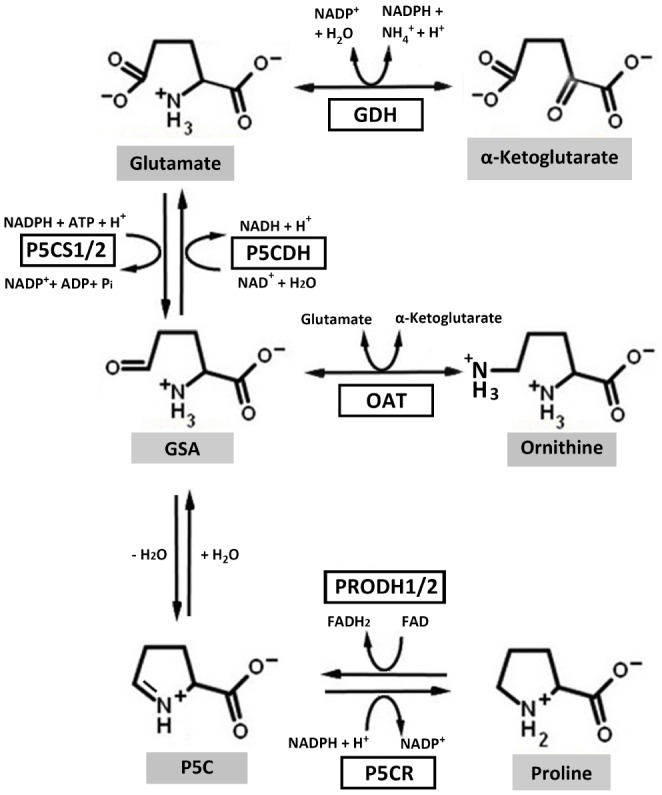FIGURE 1.

Proline metabolic pathways in higher plants. In the biosynthesis pathway, ornithine and glutamate can be converted to glutamate-γ-semialdehyde (GSA) by ornithine-δ-aminotransferase (OAT) and 1Δ-pyrroline-5-carboxylate (P5C) synthetase (P5CS), respectively. GSA can then spontaneously cyclize to P5C by losing one molecule of H2O. P5C is the substrate for P5C reductase (P5CR), which catalyzes the last step in proline synthesis. In the catabolic pathway, proline dehydrogenase (PRODH) and P5C dehydrogenase (P5CDH) catalyze the oxidation of proline to glutamate. Electrons from reduced flavin (FADH2) are transferred to the respiratory electron transport chain to regenerate oxidized flavin (FAD) and complete the PRODH catalytic cycle. Glutamate dehydrogenase (GDH) interconverts glutamate and α-ketoglutarate, which enters the tricarboxylic acid cycle. Higher plants harbor two isoforms of P5CS and PRODH.
